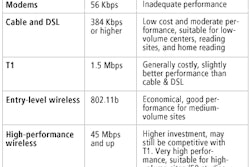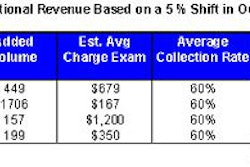Battling over which department should control PACS -- radiology or information technology (IT) -- is divisive and unproductive. So instead of participating in a no-win scenario, the Community Hospital of the Monterey Peninsula (CHOMP) in Monterey, CA, elected to integrate IT support into radiology operations to facilitate the transition to a digital environment.
"In our experience, it really has to be a partnership (between radiology and IT)," said Andrea McDonald, clinical technology coordinator for CHOMP's radiology department. "It may be a peaceful coexistence, maybe it's a marriage. We're still working those issues out."
McDonald, who served in CHOMP's IT department for eight years before accepting a new position in the radiology department, presented her facility's solution during the 2002 Symposium for Computer Applications in Radiology in Cleveland. To handle the challenge of supporting a transition to PACS, CHOMP promoted and trained clinical staff in IT functions and transferred an IT person -- McDonald -- into the radiology department.
"I provide the conduit from radiology to the IT department," she said. "I can translate some of the information from the radiology requirements into IT speak, and conversely, I can learn and understand what the issues are associated with what's going to happen on IT's network or the hospital's network."
IT responsibility
The management of "low-voltage" cabling such as data and phone lines is shared by IT and the engineering department's biomed group, which supports the physical wires. IT manages network electronics (such as routers, switches, and bridges) and oversees operating systems, McDonald said.
"When you get underneath the hood of these PACS systems and workstations, etc., you find (operating systems such as) Windows NT, Windows 2000, and Unix VMS," she said. "It's an awful lot to expect a radiology department to learn all the ins and outs of that. It just helps to have people supporting and understanding the clinical environment, and also be able to translate some of the operating requirements."
HL7 interfaces are supported by the IT department. The IT unit also has a RIS analyst and provides desktop PC support, she said.
Radiology responsibilities
In the radiology department, the clinical technologies coordinator performs systems analysis, works with vendors, and reviews contracts. She also evaluates hardware, networking components, and operating systems, McDonald said.
An operations supervisor oversees radiology IT support personnel, including staff responsible for tasks such as tape transfers and quality control, she said. Other key radiology system support staff include a RIS applications administrator and a DICOM print and archive administrator.
The radiology department is responsible for DICOM applications and workstations. Vendors retain responsibility for hardware and software maintenance, she said.
To make support as smooth as possible, the radiology and IT departments maintain close ties, even holding formal interdepartmental monthly meetings. In addition, weekly calls are held with support vendors as needed, and informal discussions take place to handle project and/or problem-specific tasks, McDonald said.
Ultimately, open lines of communication and a blend of radiology and IT support staff have produced an effective support environment.
"Finding and maintaining qualified individuals versed in both IT and radiology is and will continue to be difficult," McDonald said. "This is about the most complex healthcare (IT) network that I've ever seen, and it's going to take a consolidated joint effort between the radiology and IT departments, and other departments in the future, such as cardiology."
By Erik L. RidleyAuntMinnie.com staff writer
September 4, 2002
Related Reading
HIMSS session: PACS offers unique IT challenges, January 29, 2002
Control over PACS remains a touchy subject, May 3, 2001
Copyright © 2002 AuntMinnie.com




















